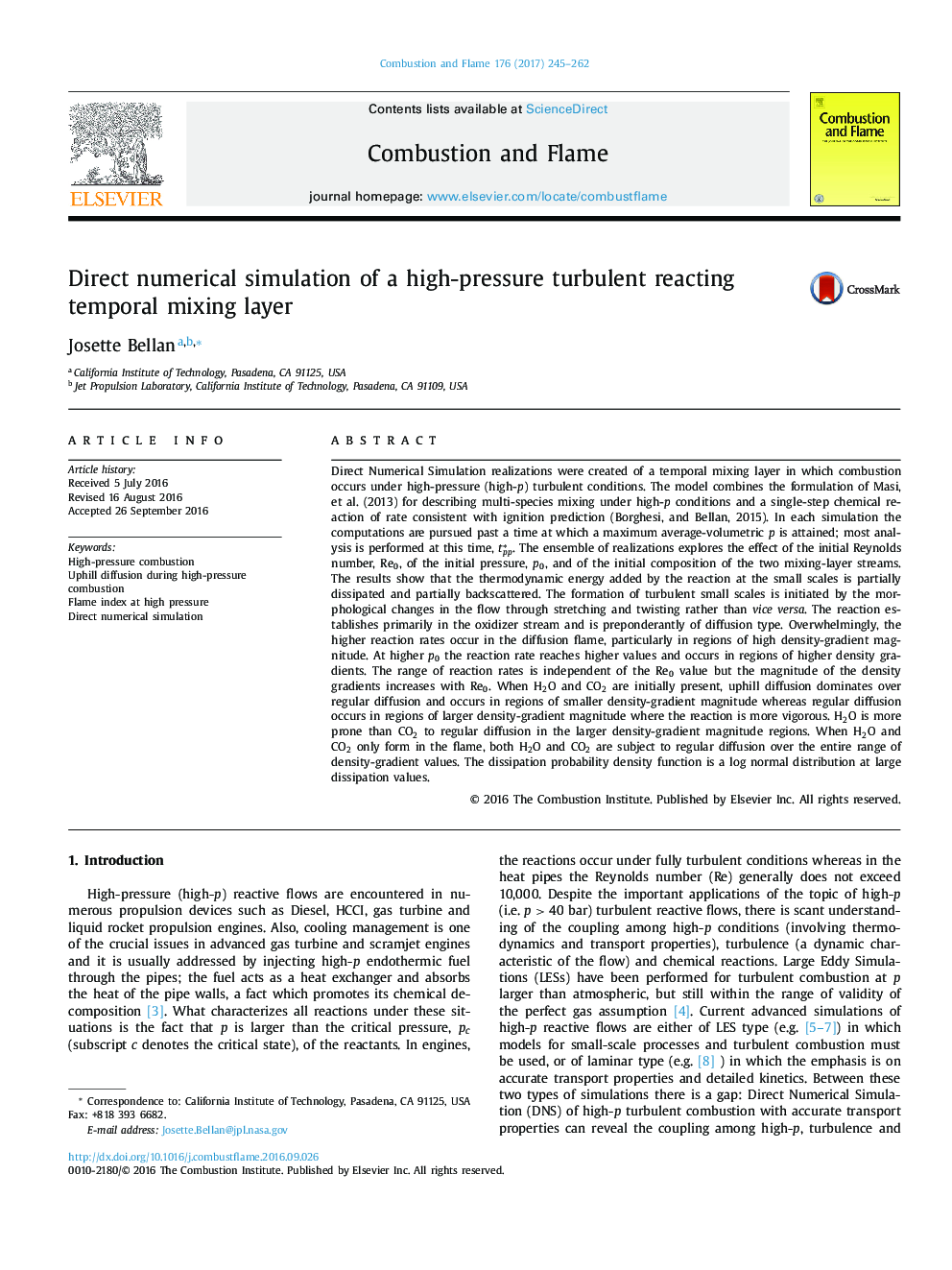| کد مقاله | کد نشریه | سال انتشار | مقاله انگلیسی | نسخه تمام متن |
|---|---|---|---|---|
| 6468445 | 1423561 | 2017 | 18 صفحه PDF | دانلود رایگان |
عنوان انگلیسی مقاله ISI
Direct numerical simulation of a high-pressure turbulent reacting temporal mixing layer
ترجمه فارسی عنوان
شبیه سازی مستقیم عددی از یک لایه مخلوطی زمانبندی واکنش با فشار بالا
دانلود مقاله + سفارش ترجمه
دانلود مقاله ISI انگلیسی
رایگان برای ایرانیان
کلمات کلیدی
احتراق فشار بالا، انتشار هوا در هنگام احتراق فشار بالا، شاخص شعله با فشار بالا، شبیه سازی مستقیم عددی،
موضوعات مرتبط
مهندسی و علوم پایه
مهندسی شیمی
مهندسی شیمی (عمومی)
چکیده انگلیسی
Direct Numerical Simulation realizations were created of a temporal mixing layer in which combustion occurs under high-pressure (high-p) turbulent conditions. The model combines the formulation of Masi, et al. (2013) for describing multi-species mixing under high-p conditions and a single-step chemical reaction of rate consistent with ignition prediction (Borghesi, and Bellan, 2015). In each simulation the computations are pursued past a time at which a maximum average-volumetric p is attained; most analysis is performed at this time, tpp*. The ensemble of realizations explores the effect of the initial Reynolds number, Re0, of the initial pressure, p0, and of the initial composition of the two mixing-layer streams. The results show that the thermodynamic energy added by the reaction at the small scales is partially dissipated and partially backscattered. The formation of turbulent small scales is initiated by the morphological changes in the flow through stretching and twisting rather than vice versa. The reaction establishes primarily in the oxidizer stream and is preponderantly of diffusion type. Overwhelmingly, the higher reaction rates occur in the diffusion flame, particularly in regions of high density-gradient magnitude. At higher p0 the reaction rate reaches higher values and occurs in regions of higher density gradients. The range of reaction rates is independent of the Re0 value but the magnitude of the density gradients increases with Re0. When H2O and CO2 are initially present, uphill diffusion dominates over regular diffusion and occurs in regions of smaller density-gradient magnitude whereas regular diffusion occurs in regions of larger density-gradient magnitude where the reaction is more vigorous. H2O is more prone than CO2 to regular diffusion in the larger density-gradient magnitude regions. When H2O and CO2 only form in the flame, both H2O and CO2 are subject to regular diffusion over the entire range of density-gradient values. The dissipation probability density function is a log normal distribution at large dissipation values.
ناشر
Database: Elsevier - ScienceDirect (ساینس دایرکت)
Journal: Combustion and Flame - Volume 176, February 2017, Pages 245-262
Journal: Combustion and Flame - Volume 176, February 2017, Pages 245-262
نویسندگان
Josette Bellan,
